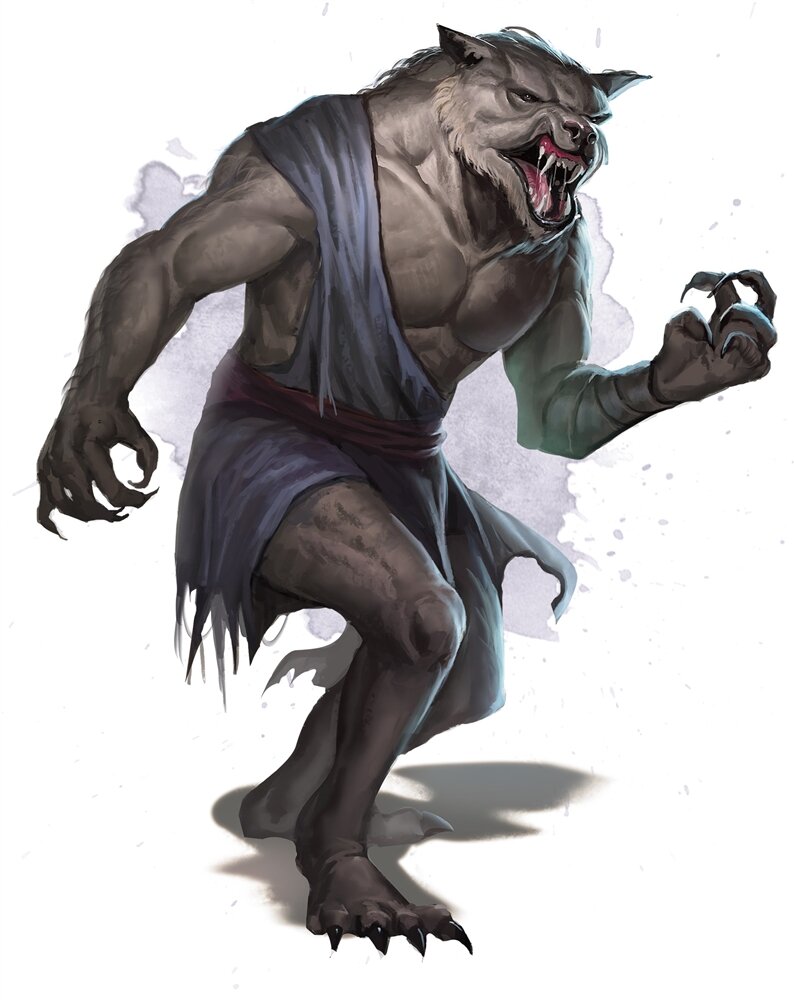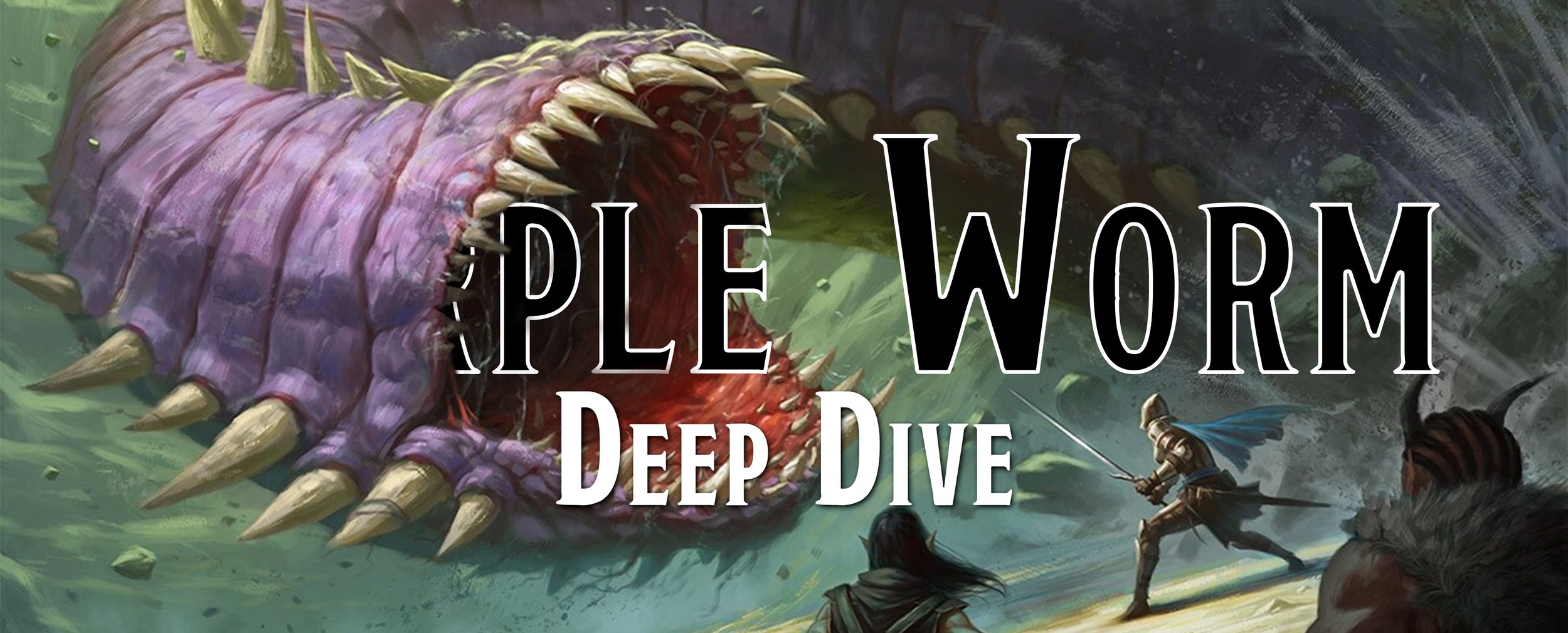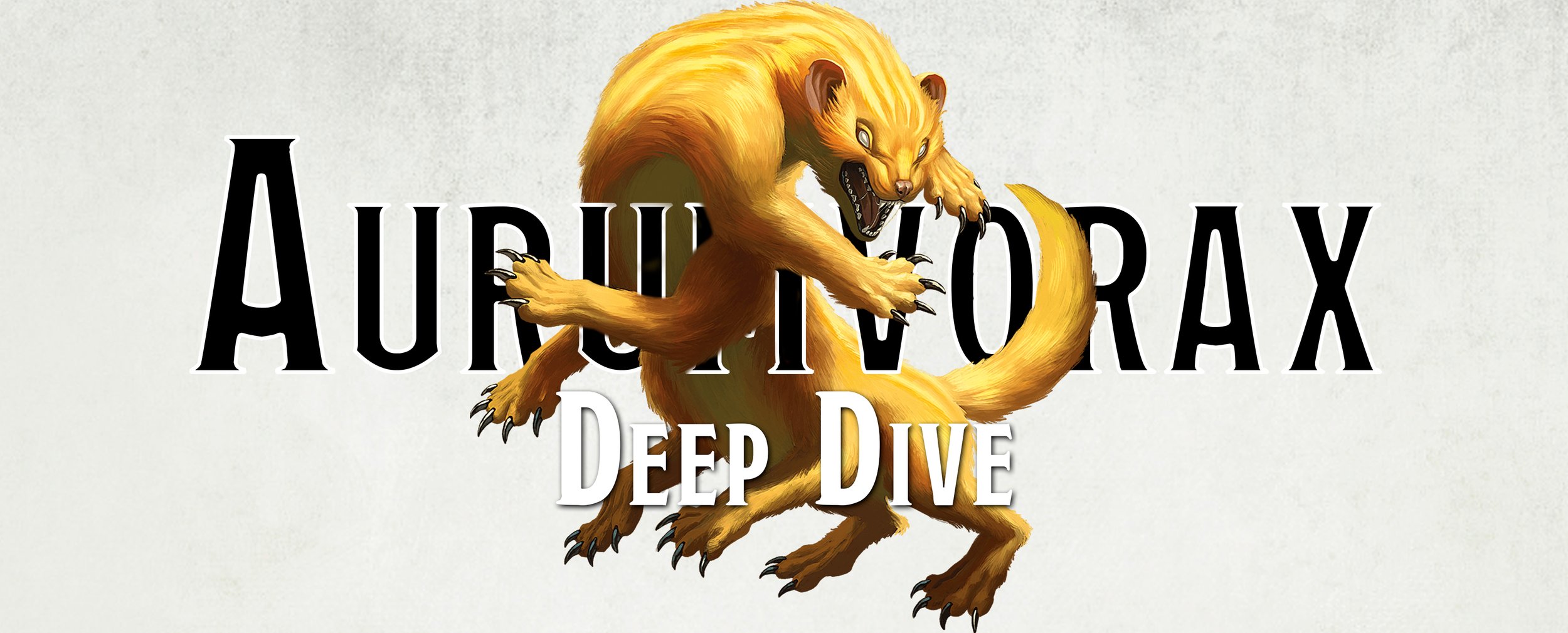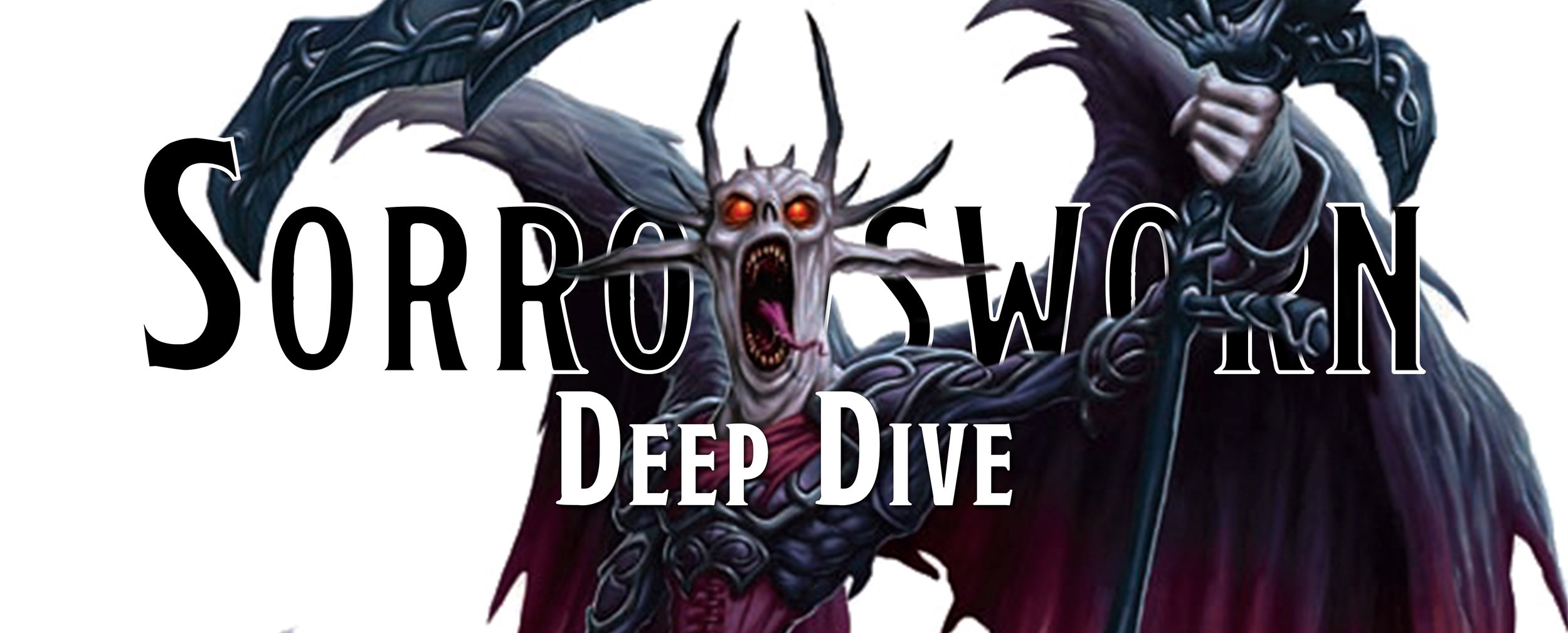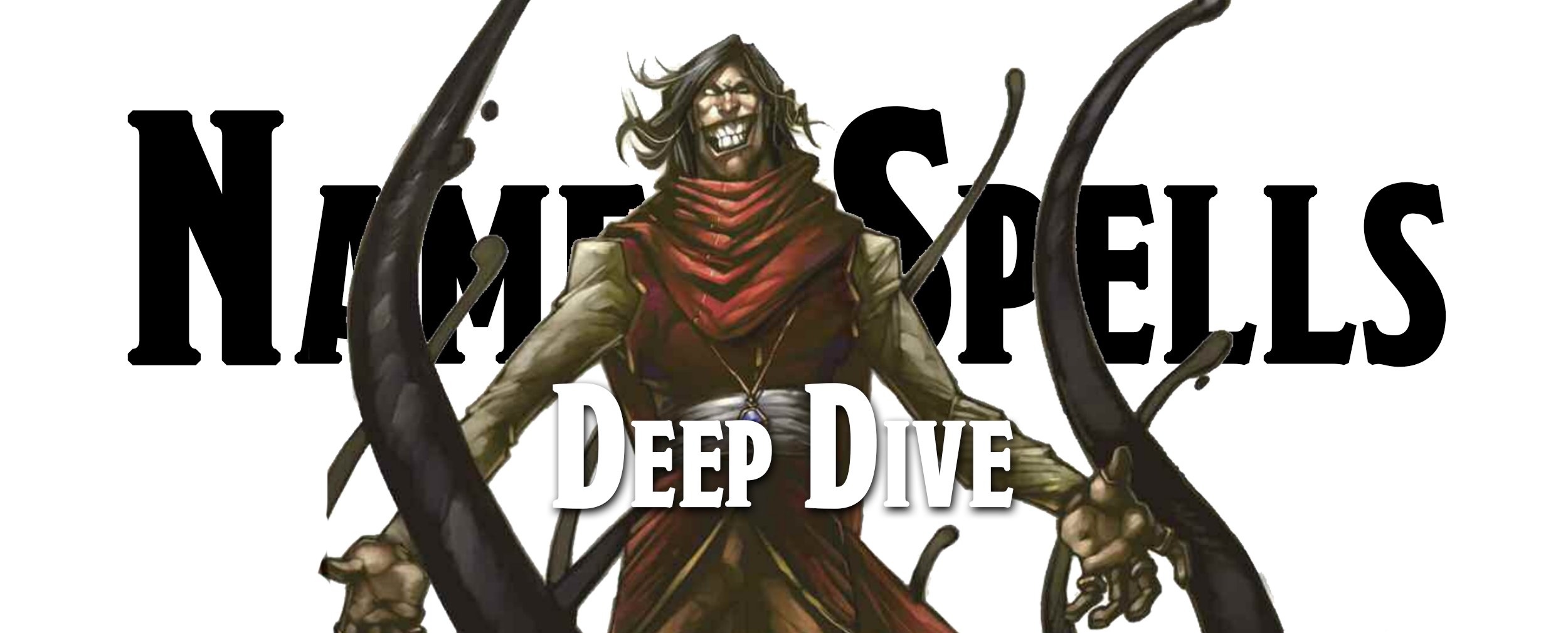Deep Dive - The Werewolf
In the next installment of our series celebrating Halloween, we take a look at everyone’s favorite lycanthrope, the Werewolf. The living embodiment of dual personality disorder, these creatures have a long and storied history in our culture.
Are they misunderstood or just creatures of evil?
One of the first movies I can remember being truly scared by was “An American Werewolf in London”, which was released in 1981. I was 11 years old, and the scene where David Naughton changes into a Werewolf is forever burned into my brain. Horrifying and fascinating at the same time, my younger self thought being a Werewolf could quite possibly be the coolest thing ever, glossing over the fact that the Werewolf then ran around killing people throughout London. David didn’t want to be a Werewolf, so I justified it by saying it wasn’t his fault and he couldn’t be blamed for what he was doing. Then Teen Wolf came out and ruined it for me.
Werewolves date back to Ancient Greece, where the mythology spoke about men that could change into wolves, usually as a punishment inflicted upon the poor soul by the gods. It wasn’t until the rise of Christianity throughout Europe in the late 16th and 17th centuries that the concept of Werewolves took root. Being a person that could change their shape was a common accusation during the witch trials of that time. Wolf attacks were frequent until the early 20th century in Europe, and with wolves being one of the most feared predators then, the mythology of Werewolves was used to explain away many of the attacks.
The lore varies among cultures, Werewolves are also known as Lycans, Lycanthropes, Shapeshifters, and She-wolves. Some stories have these creatures being able to change shape at will, while others tell us that they will only transform during a full moon. Common lore is that when they are in human form, they are extremely hairy, have animal-like teeth, and are a very unfriendly lot while others portray them as indistinguishable from everyone else. Modern-day Werewolves vary from movie to movie, story to story. Lycan abilities range from having incredible strength, the power to heal themselves, the ability to change shape at will, and being the mortal enemies of vampires.
So where do they fit into Dungeons & Dragons? First off, we will be focusing on the Werewolf and not the entire family of lycanthropes. It would take forever to talk about every member of the lycanthrope family considering that there have been all sorts of shapechangers, from wererats to werecrocodiles to werebears. But the Werewolf is the mother of the lycanthrope family, so our focus and stat blocks will be on them. Let’s get started and see how our friendly neighborhood shape changer has progressed throughout the editions.
OD&D - Werewolf, under Lycanthrope
No. Appearing: 2-20
Armor Class: 5
Move: 15"
Hit Dice: 4
% in Lair: 15%
Treasure Type: C
No. of Attacks: 1
Damage/Attack: 1d6+Special
Save: F4
Alignment: Neutral/Chaos
OD&D introduces the Werewolf in the Dungeons & Dragons White Box (1974) starts right off the bat with four different lycanthropes - Werewolf, wereboar, weretiger, and werebear. It also starts us off on the wrong by making the Werewolf the weakest of all the lycanthropes in this edition. They are the godfathers of lycanthropes! I understand weretiger and werebears being stronger, but the wereboar? At the very least they could have come up with a few lycanthropes that would be weaker than Werewolf.
Everyone knows that werewolves can only be hurt by silver weapons, and so OD&D keeps up with that fact and makes it one of the first facts they put in the description. They can also be damaged by magical weapons, which makes sense, but takes a little off the shine of the silvered weapons. Multiple werewolves are either in packs, which number 2-4, or in family packs, which number 5-8 and include a mom, dad, and their children… er, pups. This leads to the question of how exactly a family pack works.
A family pack will consist of two adults with the remainder being made up of children of varying ages, from toddlers to young adults. If the young are attacked, the mom will get pissed and she will fight at three times her base damage for four rounds. This ferocious onslaught does come at a cost, as after the four rounds, her attacks drop to only half their normal value. But it isn’t only the mother who gets angry if she is attacked, look out, cause the father then gets a turn to get angry. The male will do double damage for the entire length of the combat, but only if the female is attacked… poor children. If both parents are killed, the very young will stop fighting while the young adults will fight to the death.
How do you change into a Werewolf in Dungeons & Dragons? Anyone seriously wounded by a Werewolf, meaning that if they took damage of 50% or more to their hit points, they will be infected and become a Werewolf within 2-24 days. Once again you’ll need a cleric in your party… haven’t we been telling you that? If your 10th level or higher healer doesn’t cast Cure Disease on the affected creature, you’ve got a werewolf in your party. There is no mention of being able to fight the curse or changing only on the full moon, in fact, the rules are pretty vague on lycanthropes in the early editions.
Though the Blackmoor (1975) supplement does specify that anyone who turns into a Werewolf gets increases to their stats and the DM decides what personality trait effectively takes over the character and they must roleplay accordingly.
Basic D&D - Werewolf
Armor Class: 5 (9 in human form)
Move: 120’ (40’)
Hit Dice: 4
No. of Attacks: 1 bite
Damage/Attack: 2-8
No. Appearing: 1-6 (2-12)
Save As: Fighter Level 4
Morale: 8
Treasure Type: C
Alignment: Chaotic
X.P. Value: 125
Basic D&D brings the Werewolf out in the Dungeons & Dragons Basic Set (1977) and development is the name of the game as this edition gives us some new fun things for the Werewolf. All lycanthropes can now summon two of their animal friends and if you’re a Werewolf, that means two pretty grey wolves will find you in 1-4 rounds and hang out. Of course, you will have to share those dead commoners with them, but there should be enough to go around. Any group of 5 or more will have a leader that is far stronger and will make any adventurers doublethink their odds.
For every one positive there are two negatives. Lycanthropes can’t wear armor, since having Plate Mail on would be uncomfortable when you change into a wolf. This makes a lot of sense, since getting larger should burst through armor and rip through your clothes, tearing them to shreds. You don’t get to keep the tattered remains of your pants on… unless you are the Hulk.
The second new disadvantage is the werewolf’s susceptibility to wolfsbane. Turns out if a lycanthrope is hit by wolfsbane, it must make a Saving Throw vs. Poison or run away in fear. The sprig of wolfsbane must be used as a weapon and for some reason, it is horrifying to behold.
In human form, a lycanthrope often looks somewhat like its were-form. Werewolves may have longer noses, sharper teeth, and so forth. In this form, they may be attacked normally, and may speak any known languages they are fluent in. In animal form, a lycanthrope may only be harmed by magic weapons, silvered weapons, or magic spells. The lycanthrope cannot speak normal languages, though it can speak with normal animals of its were-type.
In the basic edition, Lycanthropy is clearly defined as a disease. As before, any human character who loses more than half of his or her hit points when in battle with it, will become a lycanthrope of the same type in 2-24 days. The victim will begin to show signs of the disease after half that time. Interestingly enough, it’s only humans that are affected by this disease. All other humanoids will be killed by the disease, not turned, which is too bad, as a gnome werewolf would be hilarious. It’s much harder to rid yourself of the disease as you now need a cleric of at least 11th level to cast Cure Disease on you. Finally, any character who becomes a werewolf will become an NPC, to be run by the DM only. That truly sucks.
AD&D - The Werewolf
Frequency: Common
No. Appearing: 3-18
Armor Class: 5
Move: 15”
Hit Dice: 4+3
% in Lair: 25%
Treasure: B
No. of Attacks: 1
Damage/Attack: 2-8
Special Attacks: Surprise on 1-3
Special Defenses: Only hit by silver or +1 or better magic weapons
Magic Resistance: Standard
Intelligence: Average
Alignment: Chaotic evil
Size: M
Psionic Ability: Nil
Monster Manual, 1977 TSR Inc.
The Werewolf was introduced in the Monster Manual (1977) and didn’t see any major changes, but we were provided with several little details and clarifications that helped explain a great many things that were not previously discussed, though the basics remain intact. Lycanthropes are humans with the ability to assume animal form, any humanoid creature bitten by a lycanthrope for damage equal to or greater than 50% of its total potential, but not killed, is infected by the disease of lycanthropy. Furthermore, they can only hit by silver or magical weapons and Werewolves are found in packs. These Werewolf packs can be family groups if they number 5 to 8. Mom gets extremely irate if you attack the children and Dad werewolf gets extremely irate if you attack the Mom. Pretty much the same right? Well…sort of.
When and what happens to Werewolves when they change their form is spelled out a bit more. The most common time they shape change to their animal form happens during the night, but they also can do so at other times. During a full moon, lycanthropes are 90% likely to be compelled to take on their animal form, now we know for sure that they can be forced to change shape during the full moon, and the exact percentage chance they have of doing so. Before 1st edition, it was assumed they had to change during a full moon, but the rules didn’t provide this level of clarification.
What if you wanted to become a Werewolf? The rules are the same as before, but with a few small twists. Now, all humanoids can catch that nasty old disease of lycanthropy if bitten for damage equal to or greater than 50% of your total, but not killed. Which makes the lycanthropes equal opportunity baddies… which is probably not what our gnome-werewolves wanted. Another little change is the Cure Disease spell to rid yourself of the disease now must be cast by a 12th or higher level cleric within 3 days or become a lycanthrope in 7-14 days.
But what if you have ignored our advice of always having a cleric? Well, now you have another option. If your character is carrying belladonna, it’s time to choke it down and hope it doesn’t kill you. If you have never heard of belladonna, maybe you know it by its other name, nightshade. Belladonna is one of the most deadly plants found in nature, as the foliage and berries are extremely toxic when ingested. There is a 25% chance that if eaten within one hour of being infected, you’ll be cured. However, it will also incapacitate you for 1-4 days and there’s a 1% chance that the poison will kill you. That’s a really small chance, but you never know how those dice will roll, especially if you haven’t been very nice to them lately.
We also get some clear descriptions of the Werewolf itself and not just basic information on all lycanthropes. Werewolves can be of nearly any build and either sex. Again, we are glad to see they have become equal opportunity creatures! You know how all the pictures have werewolves standing on only two legs? We now know it is made clear that they are prone to retain their bipedal form in their wolf state. We are also introduced to wolfweres, which are wolves that can become men, and they always take normal wolf form. This is the first mention of wolfweres, so welcome to the party folks!
2e - Werewolf, Lycanthrope
Climate/Terrain: Any
Frequency: Common
Organization: Pack
Activity Cycle: Nocturnal
Diet: Carnivore
Treasure: B
Intelligence: Average (8-10)
Alignment: Chaotic Evil
No. Appearing: 3-18 (3d6)
Armor Class: 5
Movement: 1
Hit Dice: 4+3
THAC0: 15
No. of Attacks: 1
Damage/Attack: 2-8
Special Attacks: Surprise
Special Defenses: Hit only by silver or +1 or better magic weapons
Magic Resistance: Standard
Size: M 6’ Tall
Morale: Steady (12)
XP Value: 420
The description of the Werewolf in 2nd edition, in the Monstrous Compendium Volume One (1989), starts by saying what we all knew but hadn’t been said yet.
Monstrous Compendium Volume One, 1989 TSR Inc
“Werewolves are the most feared of the lycanthropes, men who can transform into wolflike beasts.”
Monstrous Compendium Volume One (1989)
Hell yeah, they are! It’s great to see the Werewolf get the recognition they deserve. It’s a shame that it took TSR until 1989 to get around to acknowledging it.
Just as with the 1st edition, the basics stay the same. Don’t get bitten or you’re screwed. Have silver or magic weapons if you want to fight them. Strong in packs, weak alone. We are going to focus less on the stats and attacks, but more on the wealth of background information, we are provided within this edition.
2nd edition always does a get job of breaking out the ecology, habitat and combat styles of D&D creatures, and the werewolf is no exception. Werewolves take on the traits of both their humanoid and beast personas. The wolf part of their personality turns them into brutal killers, while the humanoid side causes them to be family-oriented. So if you haven’t remembered from the previous editions, don’t screw with the werewolf pups.
When in their human form, a werewolf looks like you and me. Unlike the earliest editions, there are no distinguishing features that would give them away. Werewolves have two primary wolf forms. The first is a hybrid that can stand on two legs and are about 1-foot taller and much stronger than their humanoid form, they are fully covered in short coarse hair, have short tails, wolflike legs, and heads that are a blend of human and lupine features, and finally they will use their claw-like hands to grapple their target so they can bite the unfortunate victim with razor-sharp teeth. The second form takes on the shape of a wolf and is often thought to be just a normal wolf when it runs on all four legs. This incarnation can also walk bipedal and has human-like hands, allowing it to attack like its hybrid cousin above.
The last type of Werewolf is identical to that of a very large wolf, almost the size of a bear. Only 20% of Werewolves can take this form and it has zero humanoid features when it becomes this massive wolf. There is a bit of creep factor as their eyes will glow red in the dark, so if you see two red eyes peering at you in the darkness and have no silvered weapons, it’s time to run… or accept your fate and not die tired… your choice.
Monstrous Manual, 1993 TSR Inc
True werewolves travel in packs, living a nomadic life, much like a regular wolf pack would. They roam the lands in search of their next meal, or should we say, victim. Those who have been bitten by a werewolf and infected with the curse of lycanthropy will often try to continue to live a ‘normal’ life. When in humanoid form, they may live in houses, usually taking over the living quarters of their victims. When in the wilderness, they will live in caves and burrows much as a normal wolf would. These dens are also used as a home for their families. When pregnant, the female retreats with her mate and an older female who will act as a midwife. This is the first mention of Werewolf midwives, but I guess they can’t just up and visit the local hospital. The den, usually located in an extremely secluded area, will be the home for the mother and her cubs for the next six years and the mother will give birth to a litter of 5-10 cubs. The cubs are born in the hybrid form, resembling fuzzy human babies with wolf-like faces... Which is either incredibly cute or terrifying… we aren’t sure where we fall yet. One of the weirder things of note is that the description makes sure to let you know that the infant mortality rate of Werewolf cubs is high, with an average of 3 pups dying before they are 6 years old.
Now if a Werewolf and a humanoid woman have a torrid affair and produce an offspring, it will be human at birth. Just like good old dad, this kid will be an angry and violent little shit. As they grow up, there is a 10% chance each year from the onset of adolescence that such a child will spontaneously transform into a true werewolf. If you thought your teenage years were bad with raging hormones, a cracking voice, and acne, realize it always could have been much worse.
Lastly, Werewolves know they are the true lycanthropes, and all others are just posers. They are openly are hostile to other were-creatures and hate werebears. The bear is the number one natural enemy of wolves and that pisses off werewolves.
3.5e - Werewolf
Werewolf, Hybrid Form, Medium Humanoid, (Human, Shapechanger)
Hit Dice: 1d8+1 plus 2d8+6 (20 hp)
Initiative: +6
Speed: 30 ft. (6 squares)
Armor Class: 16 (+2 Dex, +4 natural), touch 12, flat-footed 14 Base Attack/Grapple: +2/+4
Attack: Claw +4 melee (1d4+2)
Full Attack: 2 claws +4 melee (1d4+2) and bite +0 melee (1d6+1)
Space/Reach: 5 ft./5 ft.
Special Attacks: Curse of lycanthropy
Special Qualities: Alternate form, wolf empathy, damage reduction 10/silver, low-light vision, scent
Saves: Fort +8 Ref +5, Will +2
Abilities: Str 15, Dex 15, Con 16, Int 10, Wis 11, Cha 8
Skills: Handle Animal +1, Hide +6, Listen +1, Move Silently +6, Spot +1, Survival +2*
Feats: (same as human form)
Environment: Temperate forests
Organization: (same as human form)
Challenge Rating: 3
Treasure: Standard
Alignment: Always chaotic evil
Advancement: By character class
Level Adjustment: +3
Monster Manual, 2003 WotC
The Werewolf is introduced in the Monster Manual (2000/2003) and, while we normally skip over 3rd edition and go straight to 3.5e, we did want to give credit to the 3rd edition for introducing the section on how to create your own lycanthrope. It provides the DM with a basic outline of what they need if they wish to create their lycanthrope creature. This is a great addition to lycanthropes, so long as you don’t try to re-create the wereseawolf or the weredolphin… which both existed in 2e.
We get stats for the werewolf as a humanoid, a hybrid or its wolf form, the stat block above is only for the hybrid form. In hybrid form, they can take more attacks and deal more damage than in their other forms and feels like the form you will most often fight Werewolves in. They also get wolf empathy, which gives them a bonus when working with wolves and dire wolves. One can only assume that is to help you to convince a few lone wolves to hang out with you, but it doesn’t specify.
The biggest thing to happen to the Werewolf in 3.5e is the addition of the Werewolf Lord. They are described as:
Feral and powerful, this humanoid is covered in gray fur and armed with sharp claws and teeth. It stands as tall as an ogre, and it has a wolflike muzzle and hateful eyes. Stronger, hardier, and more deadly than its lesser fellows, the werewolf lord is a murderous beast that delights in wreaking havoc.
Monster Manual, 2003
So that’s cool.
The werewolf lord is a natural lycanthrope. These creatures can change themselves into humanoid, hybrid and wolf forms, with each form being much more powerful than their smaller brethren. In humanoid form, they are listed as a 10th-level human fighter. In wolf form, they become a dire wolf. On a side note, in this form, they can trip just as normal wolves do. In hybrid form, they lose that ability, but they can wield weapons or fight with their claws. Sometimes even a lycanthrope just wants to swing their giant blade around like a barbarian.
Now, in this edition, the chance for contracting lycanthrope is pretty high. Any time you are hit by a bite attack by a lycanthrope, you must succeed on a Constitution saving throw or become a lycanthrope. But what does that mean? Well, in Races of Faerun (2003), they provide information on how to build a player character as a lycanthrope. The player’s character gains a lot of the same abilities as a regular lycanthrope and while they get a lot stronger immediately, it takes a greater amount of time for them to level up as they effectively have auto-leveled up three times. This can be hard for any preplanned out characters, though that Damage Resistance 10/Silver is pretty handy…
4e - The Werewolf
Werewolf - Level 8 Brute
Medium natural humanoid (shapechanger) XP 350
Initiative +7 / Senses Perception +11; low-light vision
Regeneration 5 (if the werewolf take damage from a silver weapon, its regeneration doesn’t function on its next turn) HP 108; Bloodied 54
AC 20; Fortitude 20, Reflex 19, Will 18
Speed 6 (8 in wolf form)
> Greatclub (standard; at-will) - Weapon. +12 vs. AC; 2d4+4 damage; also see blood rage
Bite (standard; at-will) +12 vs. AC; 1d6+4 damage, and the target takes ongoing 5 damage (save ends) and contracts moon frenzy (see below); see also blood rage.
Blood Rage The werewolf’s melee attacks deal 4 extra damage against a bloodied target.
Change Shape (minor; at-will) Polymorph. A werewolf can alter its physical form to appear as a grey wolf or unique human. It cannot use its bite in human form and cannot make greatclub attacks in wolf form.
Alignment Evil / Languages Common Skills Bluff +9, Insight +11, Intimidate +9, Nature +11
Str 19 (+8) | Dex 16 (+7) | Wis 14 (+6) | Con 18 (+8) | Int 10 (+4) | Cha 11 (+4)
Equipment leather armor, greatclub
Monster Manual, 2008 WotC
4th edition releases the lycanthropes in the Monster Manual (2008) and scales back the lycanthrope family to just the wererat and Werewolf, with the wereboar, weretiger and werewolf lord in the Monster Manual 2 (2010). For such a proud class of creatures, this fall from greatness must have been hard.
Not only does the family of lycanthropes get reduced, but the overall might of the werewolf does too. When taking into account the changes in the base rules, the werewolf’s stats are slightly nerfed. The biggest change, however, is the disappearance of the curse of lycanthropy. In the description, it is explained that lycanthropy is hereditary, and they mate with their species to expand the race. WotC's decision to strip the historical and primary appeal of the werewolf makes no sense at all and is one of the more baffling changes when it comes to creatures in 4th edition.
To counter this incredibly strange development, two new abilities are added to the Werewolf’s arsenal. First, they can now fight with weapons and wear armor when they are in hybrid form. We didn’t realize they had non-magical armor that would alter its size and shape to accommodate the physical changes the werewolf would go through, but what do we know. The great club is the preferred weapon of the Werewolf, though its bite is incredibly powerful. The great club beats out on immediate damage, but the bite provides lasting damage every round and the target is afflicted with Moon Frenzy.
What is Moon Frenzy? It’s a cheap replacement for the curse of lycanthropy. While the target is bloodied, they must make a saving throw at the end of their turn, or attack a random target with 5 squares on their next turn. No targets? Then they just move in a random direction. If the target fails enough saves, they enter into the final state of moon frenzy, where the creature attacks the nearest creature within its line of sight. It’s a nice little ability to add, but not as a replacement for the core feature of the lycanthrope family! It’s just… sigh. They don’t really feel like lycanthropes anymore, just moon-dogs.
5e - The Werewolf
Werewolf / Medium humanoid (human, shapechanger), chaotic evil
Armor Class 11 in humanoid form (natural armor), 12 (natural armor) in wolf orhybrid form. Hit Points 58 (9d8+18)
Speed 30 ft. (40 ft. in wolf form)
Str 15 (+2) | Dex 13 (+1) | Con 14 (+2) | Int 10 (+0) | Wis 11 (+0) | Cha 10 (+0)
Skills Perception +4, Stealth +3
Damage Immunities bludgeoning, piercing, and slashing from nonmagical weapons that aren’t silvered
Senses passive Perception 14
Languages Common (can’t speak in wolf form)
Challenge 3 (700 XP)
Shapechanger. The werewolf can use its action to polymorph into a wolf-humanoid hybrid or into a wolf, or back into its true form, which is humanoid. Its statistics, other than its AC, are the same in each form. Any equipment it is wearing or carrying isn’t transformed. it reverts to its true form if it dies.
Keen Hearing and Smell. The werewolf has advantage on Wisdom (Perception) checks that rely on hearing or smell.
Multiattack (Humanoid or Hybrid Form Only). The werewolf makes two attacks: one with its bite and one with its claws or spear.
Bite (Wolf or Hybrid Form Only). Melee Weapon Attack: +4 to hit, reach 5 ft., one target. Hit: 6 (1d8 + 2) piercing damage. If the target is a humanoid, it must succeed on a DC 12 Constitution saving throw or be cursed with werewolf lycanthropy.
Claws (Hybrid Form Only). Melee Weapon Attack: +4 to hit, reach 5 ft., one creature. Hit: 7 (2d4 + 2) slashing damage.
Spear (Humanoid Form Only). Melee or Ranged Weapon Attack: +4 to hit, reach 5 ft. or range 20/60 ft., one creature. Hit: 5 (1d6 + 2) piercing damage, or 6 (1d8 + 2) piercing damage if used with two hands to make a melee attack.
Monster Manual, 2014 WotC
5th edition restores the lycanthrope to greatness by bringing back the curse of lycanthropy in the Monster Manual (2014). The opening line in the description of the lycanthrope states that the curse is one of the most ancient and feared of all curses. Hell yes, it is. We are also reintroduced to the werebear, wereboar, and weretiger. Welcome back everyone, we missed you… except for the weredolphin, which thankfully didn’t make the cut.
The Werewolf is brought back and it is angry. They are defined as being short-tempered with greater sense and a love for rare meat. The Werewolf can also take the shape of a wolf or hybrid like the editions before it, with the hybrid form remaining the scariest of all. A werewolf can wield weapons, rip you apart with their claws, or bite you with razor-sharp teeth. None of those options seem particularly appealing to the poor sorcerer hiding in the back of the room.
Once a person is turned into a Werewolf, they usually take to the road, leaving behind the comforts of city life. The Werewolf that rejects their curse leaves, not because he is ashamed, but because he is worried about what he may do to those he loves. Of course, there are always those creatures that want to be murder hobos, and they departed not out of concern for others, but because they are narcissists worried only about what will happen to them if they are caught eating that tasty flesh. No mention of them having a family or having little werewolves, but they will form packs, which once again include wolves and dire wolves.
5e brings very little that is new to the lycanthropes, but it is a nice change from what the Werewolf once was in 4th edition. The curse of lycanthropy is back in full infection mode, and many who suffer from its curse find it difficult to reconcile who they are with what they are… though some who are infected find it easier to be their were-animal rather than staying a humanoid.
So there it is the mighty werewolf. Outside of the 4th edition, Dungeons & Dragons has done a great job with the Werewolf we all know and love. The only thing we wish was there was some mention of the blood-curdling howl depicted in the movies. Once you heard that terrifying sound, you knew the characters in the movie were screwed.
If you enjoy our Deep Dive series consider
supporting us on Patreon and following us on Twitter!







